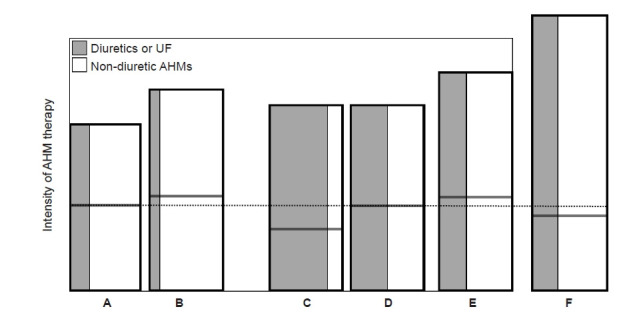Figure 3. Spectrum of therapeutic options for AHM vs. diuretics or UF in CKD (A, B, and F) and the status at the end of the hemodialysis session (C, D, and E).

(A) CKD, with normovolemia. (B) CKD, with permissible hypervolemia, less active use of diuretics. (C) Hemodialysis, absolute dry weight, hypovolemia with minimum use of AHM. (D) Hemodialysis, normovolemia. (E) Hemodialysis, functional dry weight or permissible hypervolemia. (F) CKD, intensive blood pressure (BP) control with permissible hypovolemia, more active use of diuretics. The achieved BP levels among A–E in the box are conventional and comparable. Relative intensity of antihypertensive therapy was depicted by the area of the rectangles. Compared to C, D–E conditions require more non-diuretics AHM to achieve the comparable level. F is the condition in need of intensive BP control to achieve the lower target BPs on the basis of permissible hypovolemia through the greater active use of diuretics or UF. The dotted line indicates the ideal status of extracellular volume or normovolemia. Each horizontal solid line represents the volume status achieved by diuretics or UF.
AHM, antihypertensive medications other than diuretics; CKD, chronic kidney disease; UF, ultrafiltration.
